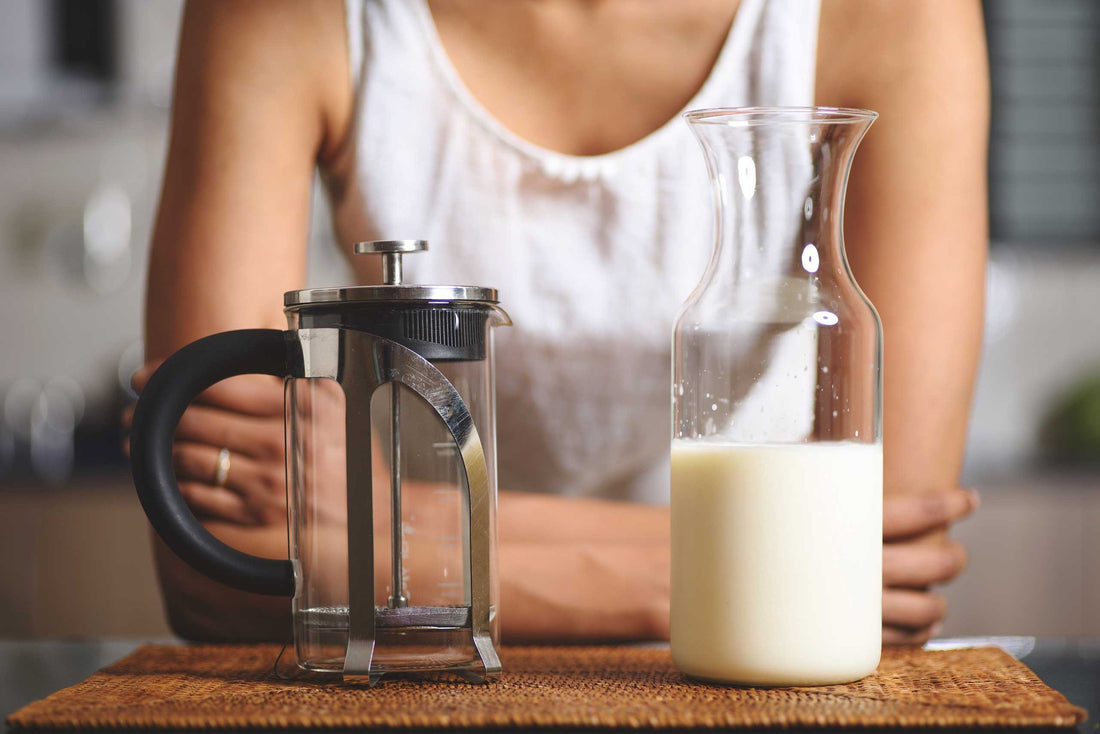
Latte Art without an Espresso Machine. Is that even possible?
Share

You’d like to enjoy cappuccinos at home, but don't have an espresso machine? No problem!
Latte art is all over Instagram. Whether you're a coffee fan or not, you've probably come across pictures or videos of latte art on social media. You can even find it in the supermarkets.
Latte art is simply something fascinating!
Best of all, you don't even have to own an expensive espresso machine with a steam wand to enjoy great latte art. Because there is already a very inexpensive method to achieve the same microfoam foam quality as with a steam wand of an espresso machine. It was precisely with this way that I taught myself my first latte art heart about 3.5 years ago.
We're talking about the French Press, of course! More precisely, frothing the milk in the French Press.
The fine strainer of the French Press makes it possible to produce very fine-pored foam, which is ideal for latte art.
Someone who has perfected this is @frenchpress.latteart

Okay, but let’s finally talk about how you can achieve this at home.
You need the following things:
- A French Press.
You may already have one at home, otherwise it can be a cheap model from Ikea or an elegant one from Bodum.
- Coffee
Of course we need some coffee for the basis of your cappuccino. Here too, are a few possibilities.
It works with coffee from an espresso machine as well as from a fully automatic one. You can also make coffee with a mocha pot. Even coffee from instant coffee works here. Everything is possible. :)
- Milk
Cow's milk with a fat content of approx. 3.5-4 % (whole milk) produces the creamiest and shiniest milk foam, but you can also use semi-skimmed milk (1.5-2.7% fat content). Any milk alternative can be used as well. It's best to try out different manufacturers, because not all of them get you a good foam quality.
- A cup
Any cup you can find at home will do. Of course, there are some that are more suitable than others. See here for the complete guide:
- A milk pitcher
In a way this really is the artist’s pencil.
You’ll need a milkpitcher to pour the cappuccino.
The milk jug should have a pointed beak and a lip. Otherwise, the milk will run right down the jug and you'll spend a few minutes cleaning it. With a lot of practice, however, the jug choice is not the most important thing for any beginner latte art patterns.
However, if you still want to equip yourself with a milk jug, I can recommend the dario pieber jug. The jug meets all requirements from beginner to professional. Available here.



This is how it works
Now that you have everything ready, let's get started.
- Start by heating the milk in a pan or in the microwave. You want the milk to be about 50-65°C. This should take a few minutes.
- In the meantime, you can prepare your espresso. It doesn't matter whether it's an espresso from an espresso machine, from a fully automatic machine, with a mokka pot or if its stirred instant coffee. You have to like it, thats the main thing. Pour a small amount (approx. 30g-50g) of coffee into your cup.
-
The milk should have reached a temperature of about 50-65°C in the meantime. Now pour the milk into your French Press so that it is just about half full.
Now comes the most important part!
-
It is best to start by pushing the plunger up and down a few times so that the sieve reaches over the surface of the milk and can incorporate enough air into the milk. A few times is enough. Because in this phase we create the volume of the milk, the longer this phase, the thicker the foam.
-
In the second phase, however, we want to reduce the large air bubbles by moving the plunger with the sieve up and down a few more times, but move only below the surface of the milk. In this way, we avoid trapping more air in the milk and making the foam too thick.
-
Once this is done, you can pour the foamed milk into your milk jug and start pouring the cappuccino.
If you still need some tips to pour a perfect heart, check out this video.
Youtube: The perfect latte art heart
Final thoughts
In my opinion, the French press version is perfect for coffee fanatics who are on a budget. It is cheap and easy to use.
However, it must be said that it will certainly take a few tries until you have found out the little tips and tricks to create the perfect microfoam. As always with latte art, practice, practice and practice some more.
I hope this guide helps you to make delicious and beautiful cappuccinos without fancy equipment.
